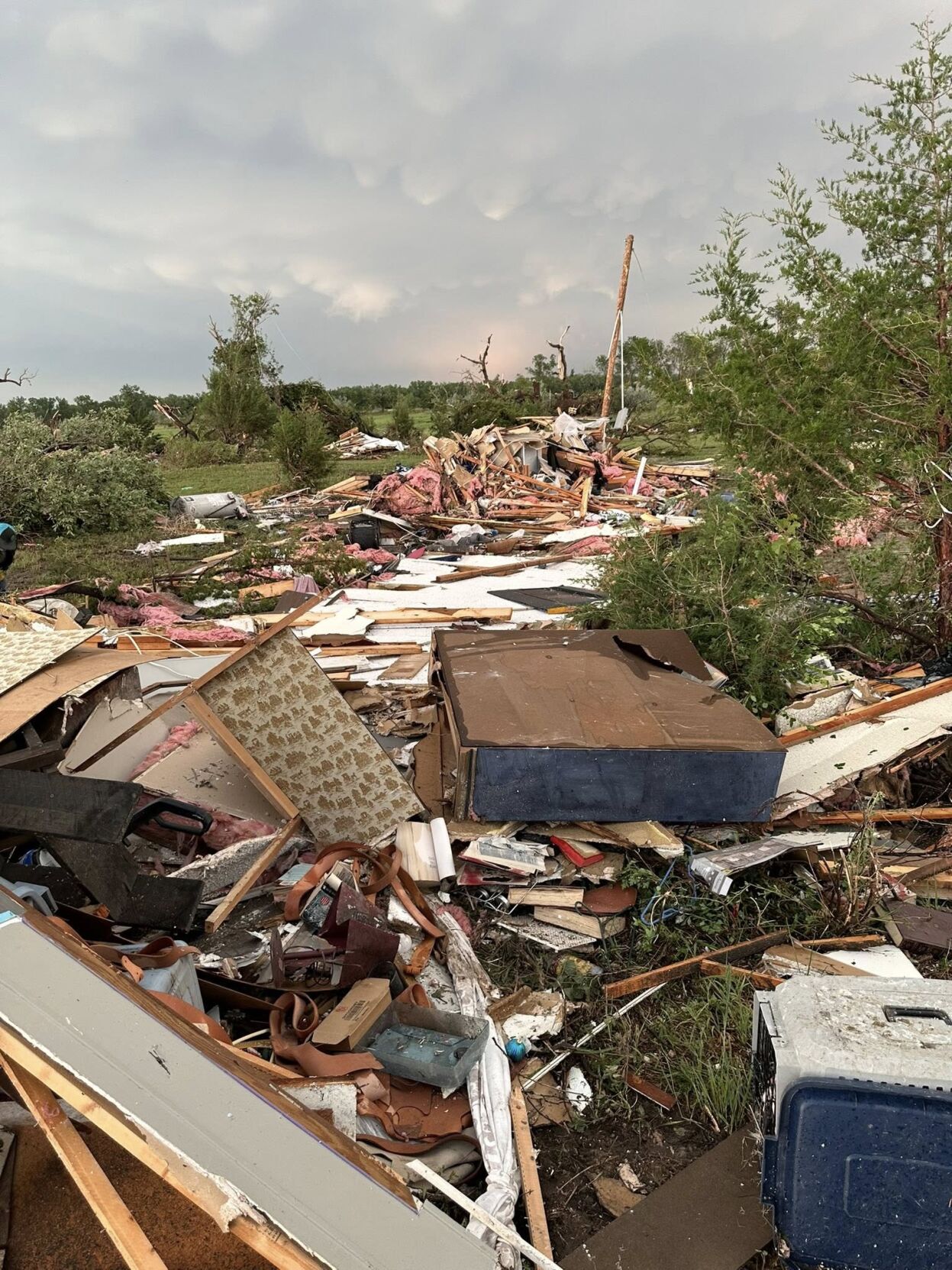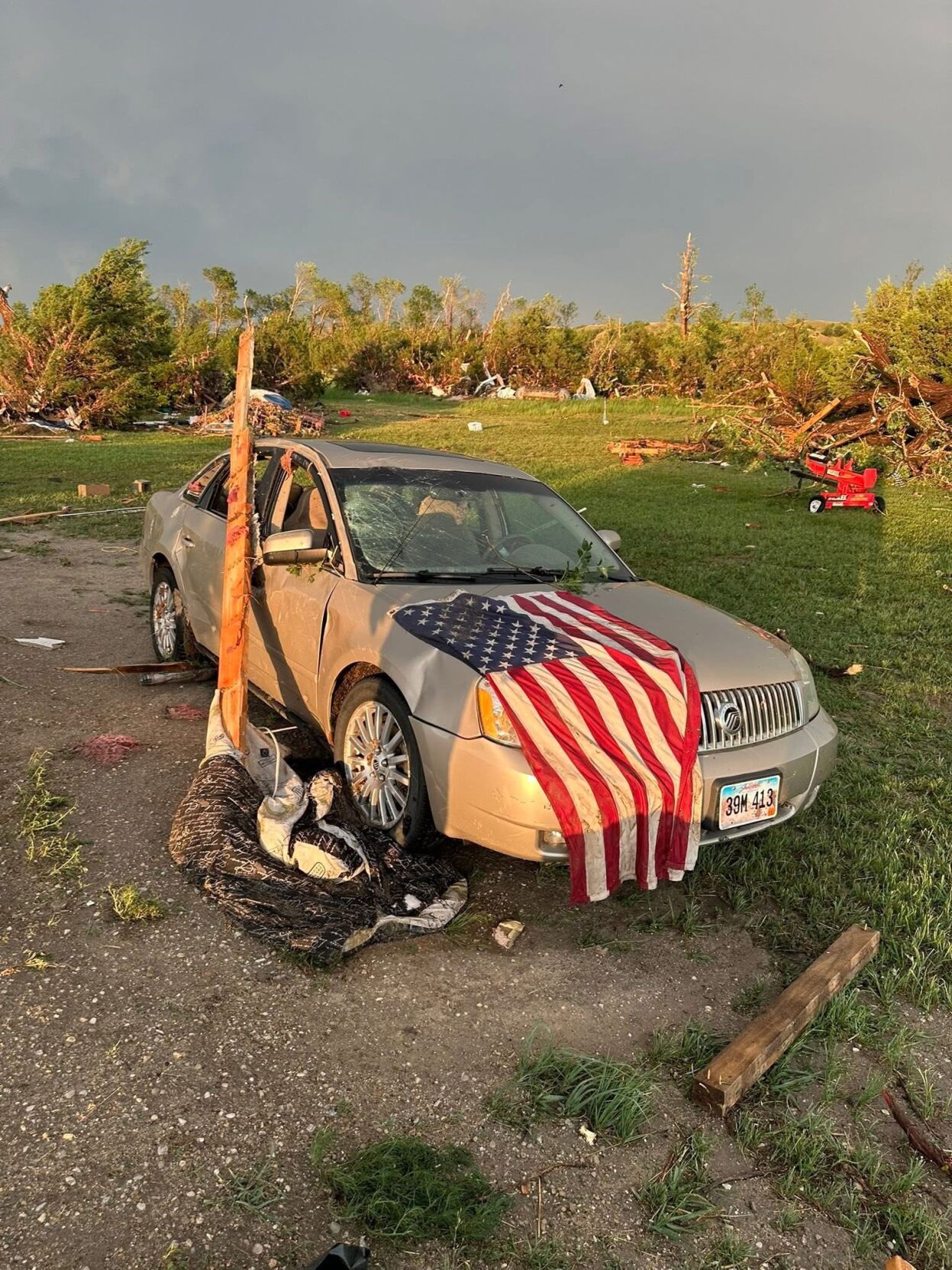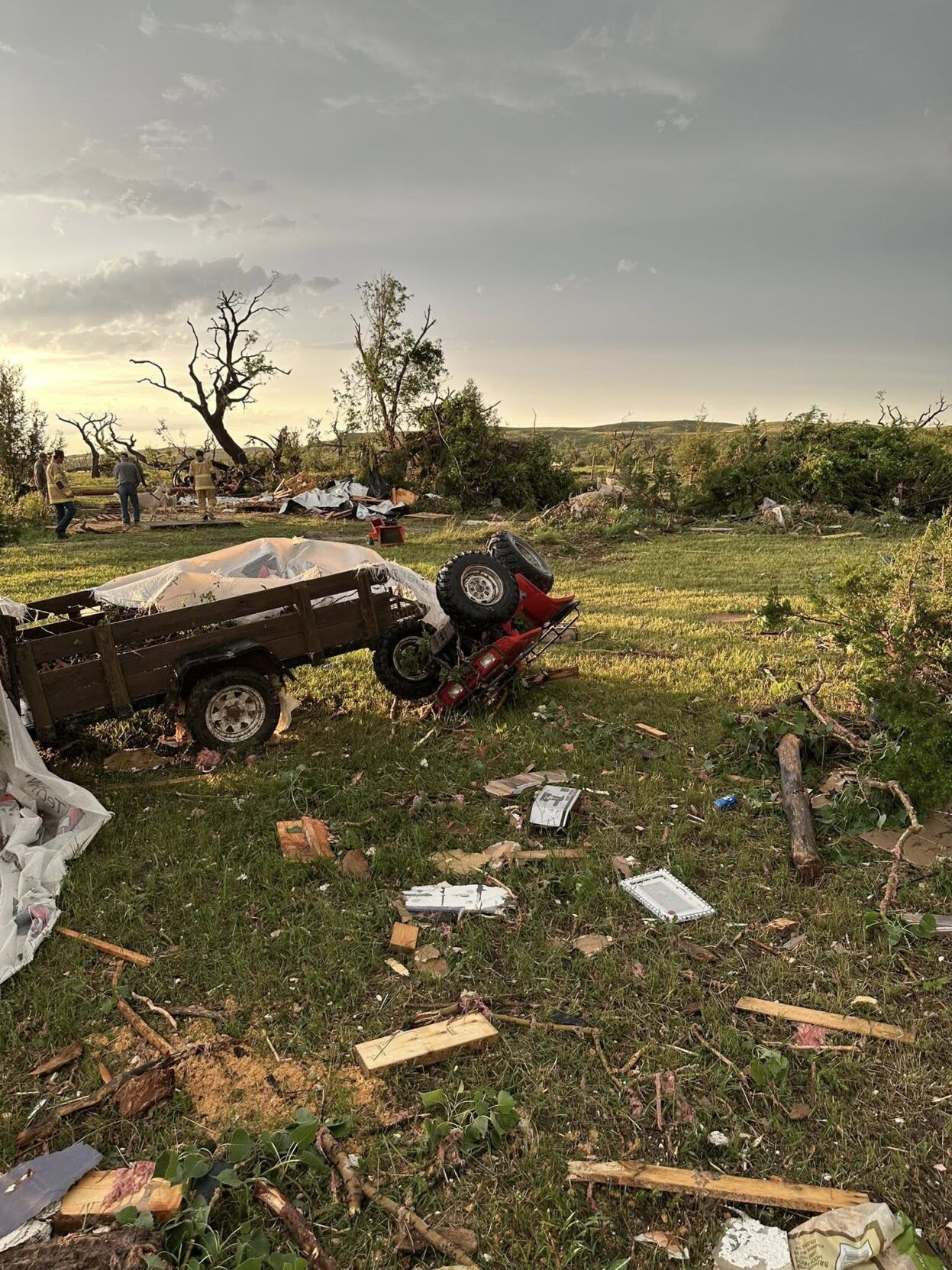Several homes and buildings were impacted after a tornado roared through the Kadoka area Saturday night.
National Weather Service Rapid City Office Meteorologist David Hintz said the tornado’s initial touchdown occurred at 6:45 p.m. Saturday. The EF2 tornado appeared five miles south of Kadoka and traveled about three to four miles within 15 minutes.
An EF2 tornado is a strong tornado on the Enhanced Fujita Scale, characterized with wind speeds between 111 and 135 mph, Hintz said. The scale goes from EF0 to EF5, with EF5 being a tornado with over 200 mph winds.

Several homes and buildings were severely damaged after a tornado roared through the Kadoka area Saturday, June 28.
According to the , late Saturday afternoon several thunderstorms developed across the °®¶ąapps and western Minnesota. These storms produced a few tornadoes between the three states, heavy rain and some wind damage.
People are also reading…
Although rare, tornadoes are not uncommon this time of year, Hintz said. About 12 tornadoes are reported annually within the spring and summer months from the Rapid City Office, he added.
Upon receiving a report at around 7:30 p.m. of a demolished home with two occupants inside, responders arrived to find "devastating" damage, according to Kadoka Volunteer Fire Department's Fire Chief Jim Fugate.
“It was pretty devastating to pull up onto,” Fugate said. “The house we pulled up to was completely destroyed and the two occupants were in the house by the time it was hit.”
Fugate said both of the residents were rescued and escaped the debris with only minor injuries. However, the damage to their home was “irreparable.” Two residential homes were impacted from the severe weather, while two other structures were completely destroyed.

Although rare, tornadoes are not uncommon this time of year. About 12 tornadoes are reported annually within the spring and summer months from the Rapid City National Weather Service Office.
Despite the devastation, Fugate said the community came together quickly to help those who were impacted. As of Monday, Fugate said nearly all of the debris has been cleaned up by neighbors.
“In rural South °®¶ąapp, it's just nice to see everyone come together in situations like this,” Fugate said.
When tornadoes are occurring or likely to occur soon, the National Weather Service provides some things the public can do to protect themselves and their property. See below for safety tips:
Know where to take shelter. Discuss tornado shelters and protection from debris with your family, wherever they may be.
At home, gather family away from windows. The safest place is an interior basement. If no basement, go to an inside room on the lowest floor (hallway, bathroom or closet). Get under sturdy furniture and cover your body and head. Avoid sheltering under heavy objects on the floor above you.
Do not stay in a mobile home manufactured prior to 1976 during a tornado, as those homes are particularly vulnerable to high winds.
Never try to outrun a tornado in a vehicle. If you see one, exit your car and lie flat in a gully, ditch or low spot. Protect your head. Avoid trees and vehicles.

Two homes near Kadoka were severely impacted by the weather, while two other structures were completely destroyed.
Long-span buildings like malls or theaters are dangerous during a tornado as their roof structures are often only supported by outer walls, leading to collapse. If inside such a building, avoid windows and seek the lowest level, preferably a basement. If no shelter is available, find cover under a door frame or sturdy furniture, such as heavy shelving in a department store or seats in a theater, and protect your head.
In public buildings (offices, schools, hospitals, churches), avoid windows and glass, go to the lowest, innermost part of the building, do not use elevators, crouch and protect your head.




















